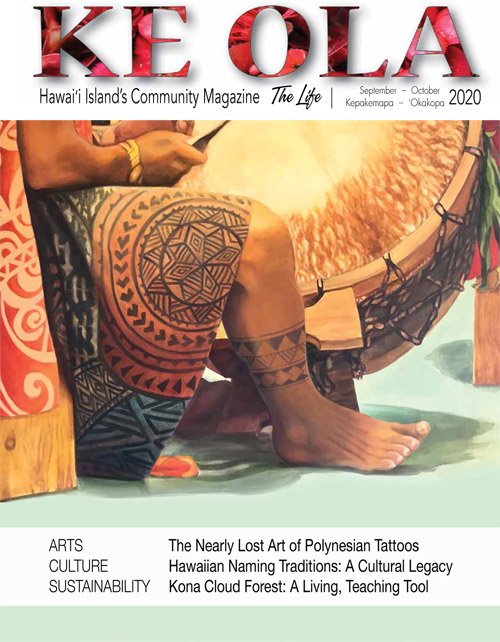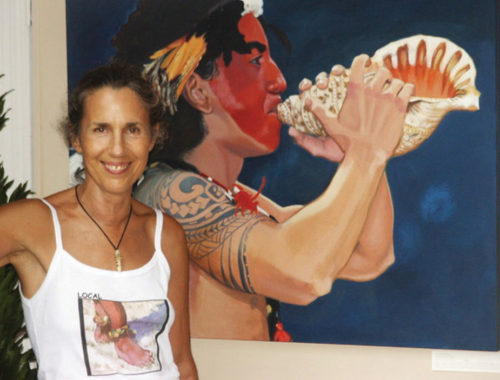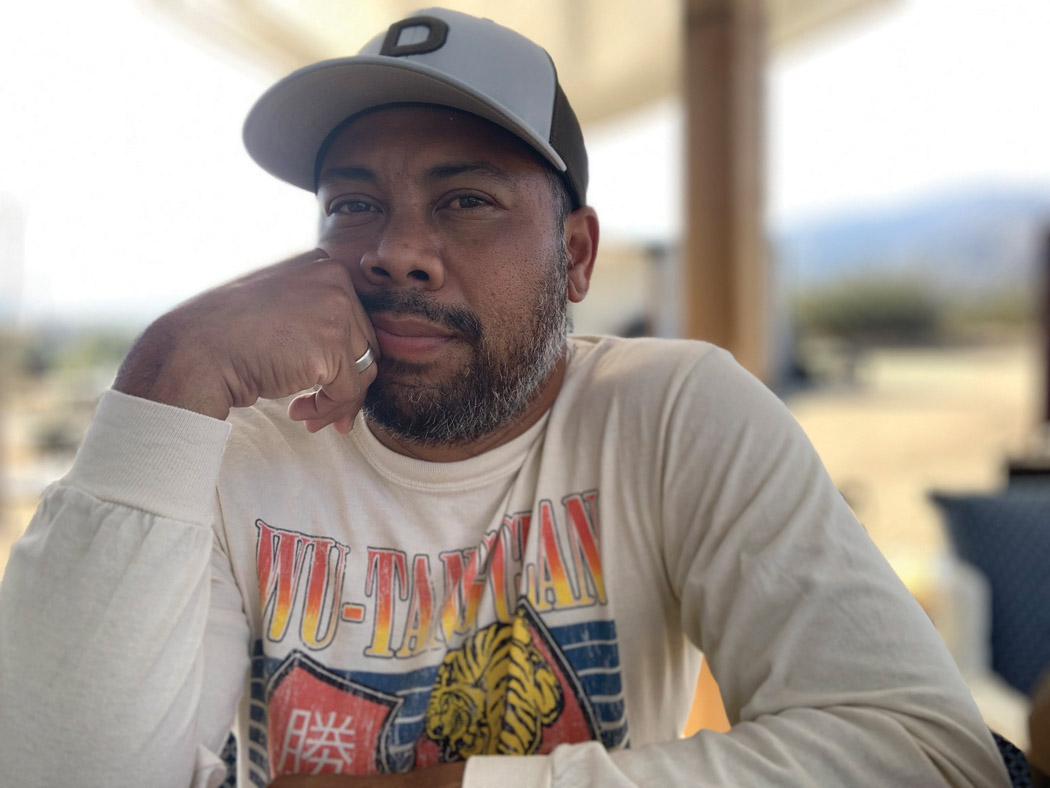
Pana Jones: From Ocean Waves to Airwaves

By Sara Stover
“I’d say I wanna go back to my little grass shack but I’m already here
Ain’t no disappearing, for me it’s clear
I’m on a high, livin’ life aquatic
Spear into my crystal, my blue simplistic, tropical, unique, diverse, exquisite…
Musician Pana Jones was born and raised on Hawai‘i Island, where he could catch a glimpse of snow-draped Mauna Kea from a sun-drenched spot of Kīholo Bay. In songs such as “Hawaii Nice,” Pana’s imaginative words and distinct voice paint a vivid picture of the experiences and sights that make his home an enchanting paradox.
To hear “Hawaii Nice” is to discover an unexpected but moving combination: lyrical rap and the sounds of old-school Hawai‘i. That these two sounds can complement and even enhance one another wouldn’t be obvious to everybody. Pana Jones, however, isnʻt everybody.
It’s tempting to imagine Pana writing “Hawaii Nice” while lounging under a palm tree, gazing out at crystal blue waves. In actuality, the song that launched it all was written in San Diego in 2010.
“I had a talk with my cousin, who worked for the Los Angeles Clippers at the time. He strongly encouraged me to write something,” Pana recalls. “At the time, I was working for a grocery store, stocking shelves overnight. I wrote ‘Hawaii Nice’ on my shift break, sitting in my Ford Focus hatchback.”
There in a dark parking lot, while the world slept, the words poured out: Snowcaps and black sands from the beginning of time…You’re so sacred, sanctuary, safety.
Pana’s cousin helped to push the tune, and it wasn’t long before every college radio station in the US, as well as stations in countries like Argentina and England, were blasting “Hawaii Nice” and college students were dreaming about moonlight stretches across the rock, along the coast.
“It was overwhelming and I wasn’t ready for that. But it opened doors for me,” says Pana, explaining how “Hawaii Nice” landed in the hands of producer Guy Roche. Roche, who produced Christina Aguilera’s “What a Girl Wants” and other mega hits, is originally from French Polynesia. He invited Pana over to his Hollywood studio and the two collaborated on a few tracks.
Although “Hawaii Nice” may have put Pana on the map, his journey from ocean waves to airwaves began in high school.
The Catalyst of Acceptance
Pana Jones grew up in Kailua-Kona. “My mom was a hotel housekeeper and my dad was a bellman,” Pana says of his childhood. “As a young kid, I was one of only three black students in the entire school. It was challenging at times and I couldn’t really accept my blackness until I was in high school.” The catalyst of acceptance came when Pana was still a freshman at Konawaena High. He attended a talent show where seniors entertained their classmates.
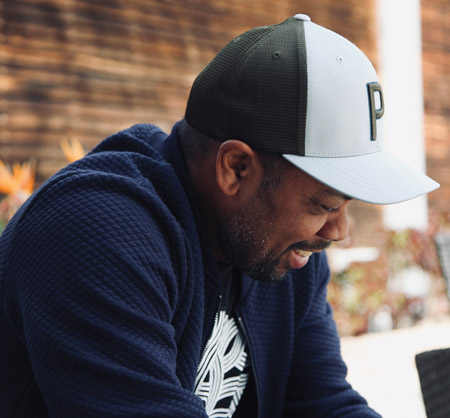
When Mike Hong, Kamaal Humphries, Mark Omaya, and Jamin Wong (now part of the band Ho‘aikane) took the floor, they performed an original rap set to the sound of an instrumental rendition of A Tribe Called Quest’s “Scenario.” Pana observed how the other students connected so palpably with these seniors through rap, and in that moment, he knew he had a story to tell and a voice to share it.
“All four of them had different personalities. It became clear that it was okay to be different and that the color of my skin was cool. That day I went home and started writing,” exclaims Pana, who later became friends with the four.
“Music is the biggest platform for a true artist to be heard and share their feelings with the world, uninterrupted,” Pana points out. “I write music in a competitive genre. A big part of rap is stance and representation.”
Although his genre of choice is rap, Pana asserts that the blues, contemporary and traditional island music, and even indie rock have been just as influential on him as Rakim or the Wu-Tang Clan.
“I listen to Muddy Waters and Taj Mahal,” he says with admiration for these artists. “My idea is to create little images, or snippets that could be relatable, while sharing experiences using sounds that I like.”
Pana’s love of blues and rap helped to spark his passion for music and songwriting. His exposure to ancient Polynesian chants, drumming, and the Hawaiian tradition of passing down values and beliefs through storytelling fueled it further.
From Ocean Waves to Airwaves
After high school, Pana attended college in California. Although he never stopped writing songs, he did so quietly. “I did it in hiding for a long time. Staying up all night trying to lace words together. Always writing for me. No one else.”
After “Hawaii Nice” hit the airwaves, there was no more hiding. By 2015, Pana was showcasing the flow and relatability his fans had come to embrace as one half of the musical duo, Nowelo. With Truth Musiq on guitar and harmonica and Pana on drums and vocals, Kona-based Nowelo was soon receiving recognition for their fusion of rap and blues.
A blues-rap song about heartache and coping with loss, Nowelo’s debut single, “Leave Me,” was met with a standing ovation when they performed it at the Hawai‘i Songwriting Festival in 2016. The single landed a spot on the Oprah Winfrey Network’s Queen Sugar. By March 2018, Nowelo was headlining the Kona Brewers Festival.
Finding His Voice, Telling His Story
Much has changed since 2018. Like the world at large, Pana has had to adapt to stay-home orders. Navigating his way through the challenges of being a dad and musician in a world of protests and pandemic has kept him busy.
“I’m working with two producers out in LA, Preed One and DK,” says Pana of how he is choosing to treat these difficulties as opportunities. “I’m interested in creating a classic rap album inspired by music that influenced me growing up. Art with substance and melody. Observation and storytelling.”
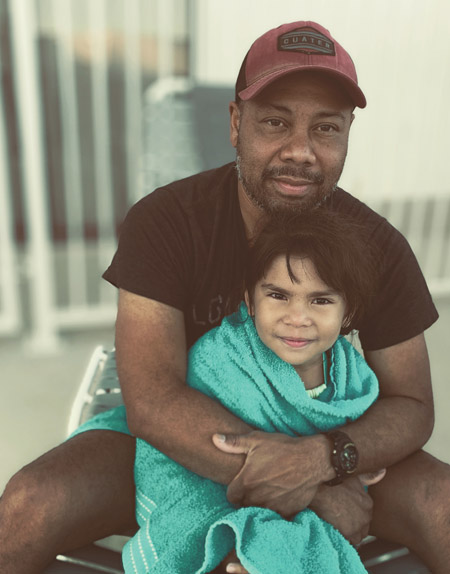
The new album will feature a remarkably and intentionally different sound, as well as a difference in delivery and cadence. Pana is finding a new cadence of parenting as well.
“The past few months have been a privilege. I got to hang out with my kid and she loved it. And I believe we’re better friends. I just sit back and watch her. She’s six and bright, with a mellow temperament and interested in many things.”
As he gushes about how smoothly his daughter transitioned to online learning, the joys of watching her learn to read, and concerns about how much she missed her teacher and friends, it’s hard to imagine that this is the same Pana who hits us with melodic, yet undeniably raw rhymes in songs like “Clearing Space.”
“The shutdown was a big lesson for me,” he admits. “It’s important for me to pay attention to being a dad now more than ever.”
As an African-American father at a time when racial injustices are being exposed across the US, Pana’s hope is that his daughter can live in a country where she is recognized and respected for her unique voice. “One where she is not judged for her color or her sex. One where she knows herself as equal, strong, and inspired. And SAFE!” he attests.
As an artist, Pana finds inspiration in the time this year has afforded him to be with family and do what he loves. “Stay-home orders have provided a great escape for me creatively. Because of social distancing, it’s a little tricky organizing studio time, but I’ve been writing songs in reaction to things happening. Songs come when they come. You can’t force them,” Pana notes, emphasizing that songs are like babies. “And then you toss your babies into the world and hope they are embraced.”
When they do come, Pana hopes the results are a piece of him that he can give to his daughter, so she can look back and understand what her dad went through.
Sharing Ideas That Are Relatable
These days, the driving force behind Pana’s music is fixing and maintaining relationships. Admittedly, the element of love in his upcoming tracks is as different as the fresh cadence he will set.
“It’s about repairing and rebuilding bridges and creating connection,” Pana says of addressing relationships and the heart in his new songs. “I’m still committed to sharing ideas that are relatable. My hope is that the new music I share repairs relationships too.”
For an artist who makes it a priority to craft songs his listeners will connect with, the lyrics of Pana’s tune “Hawaii Nice” are just as relatable in 2020 as they were when he penned the words a decade ago.
Safe in the arms at night,
Never seen stars shine so bright
I thank God for the love
And the life
And the night’s full of peace I’ve been through
Pana’s music tells a timeless story, echoing a hope that is more precious now than ever: that there exist corners of the world where we can find safety, love, acceptance, and peace. ❖
Find all of Pana Jones’ music on Apple Music and Spotify.
